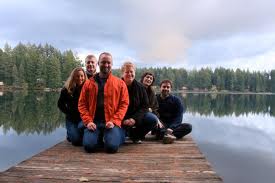How to run a powerful, purposeful board retreat
 There are many good reasons to conduct a board retreat: to create or revisit the organization’s mission, vision, and strategic plan; clarify roles and responsibilities; orient new members; reconnect and re-energize a stagnant board; and/or address critical issues or opportunities, to name a few. However, bringing the entire board together in person can be a challenge. So, to get them to come—and really want to be there—you need to create a focused, meaningful, and enjoyable experience for everyone. Here are some ideas for board retreats that really hit the mark.
There are many good reasons to conduct a board retreat: to create or revisit the organization’s mission, vision, and strategic plan; clarify roles and responsibilities; orient new members; reconnect and re-energize a stagnant board; and/or address critical issues or opportunities, to name a few. However, bringing the entire board together in person can be a challenge. So, to get them to come—and really want to be there—you need to create a focused, meaningful, and enjoyable experience for everyone. Here are some ideas for board retreats that really hit the mark.
Design and Planning
First, identify the purpose and specific outcomes you want from the retreat romsen. Is it time for strategic planning? Are you trying to solve an important organizational issue? Do you need to revitalize a stagnant board? Schedule a planning meeting with the organization’s CEO, board chair, and other leadership team members as needed to determine the retreat purpose and outcomes; learn what’s most pressing for the organization; better understand board dynamics; and assess board engagement, strengths, weaknesses, etc. In addition, discuss timing, duration, location, number of attendees, etc. You don’t need to finalize all the details yet, just enough to develop a draft agenda.
After meeting with organizational and board leaders, it’s a good idea to have brief “input” conversations with some or all board members to understand their views, gather topic ideas and get participants excited about the retreat video from microsoft stream. Input conversations can last anywhere from 20-40 minutes. Some sample input questions include:
- What do you think is working well with the organization?
- What would you like to see the organization do more of, do better or do differently?
- What do you think the organization should stop doing?
- What are three things the organization should focus on over the next 12 months?
- What is your vision for this organization over the next three years dream league soccer logo download?
- What would help you feel more engaged and useful as a board member?
- What would help the board work even more effectively together?
Using the information from your leadership planning meeting and input conversations, craft an action-focused agenda that incorporates the retreat’s purpose and desired outcomes. Some things to consider:
- Avoid status or progress reporting. Instead, have participants review status reports ahead of time and focus sessions on generating ideas, solving problems, making decisions, etc horror games download for free german.
- Structure adequate time for building relationships. Schedule time to eat together, walk together and learn about one another. It’s ideal if you can hold a retreat over two days that includes a social dinner.
- Build some flexibility into your agenda to accommodate hot topics or deeper dives into important issues.
- Create discrete sessions with time blocks of one to three hours to help participants digest information, offer natural break points and provide variety. Have each session build upon one another in a logical order based on your goals.
- As you create the agenda, decide what output you want from each session and plan for how to capture key issues, ideas, resources, outcomes and action steps from each session alle emailsen outlook. This will make documenting the retreat much easier.
- Schedule ample time (at least 45 minutes) at the end to discuss action items, accountability, takeaways, appreciations and other closing activities.
- Decide on any supporting materials, resources and preparatory work. Make sure participants have the agenda, materials and instructions at least one week before the retreat. Communicate with board members throughout the planning process to answer questions, remind them about pre-work, help them with logistics, etc.
Facilitation
While it’s not uncommon for a board or staff member to facilitate a retreat, having outside facilitation helps every participant fully engage in the retreat taize lieder kostenlosen. Also, an outside facilitator also helps reduce bias or undue influence and may notice and address board issues or dynamics not obvious to participants. Some other good practices for facilitation:
- Start with a warm-up that gets everyone talking. An easy exercise is to pose a couple of questions that participants discuss with one or two people next to them. It’s good to include one personal and one organizational question.
- Announce the retreat objectives and outcomes, preview the agenda, cover any logistics and discuss how participants can get the most from their time together playstation 4 demos herunterladen.
- Set expectations up front for how you will facilitate the retreat, such as balancing participation, managing interruptions, encouraging constructive comments, etc.
- Capture highlights from each session using flipcharts, a note taker, recording device, etc. Some facilitators find it useful to use separate flipcharts for ideas, resources, action steps, “parking lot” or other categories as needed.

- Check in periodically about participants’ comfort level, questions, concerns, etc apple games gratis downloaden. The more transparent you are as a facilitator, the more the participants can relax and trust the process.
- After a long or complex session, briefly summarize highlights and outcomes. If there is time, ask participants to share their own takeaways from the session.
- If the discussion veers off the agenda, refer back to the retreat objectives and outcomes. Ask if this conversation supports their overall retreat goals, if the topic supersedes other agenda items or if it can be covered elsewhere.
- Have plenty of food, beverages, time for breaks and table toys to help quell the “fidgets.” Periodically check people’s energy and take a short break if needed streams downloaden.
Outcomes and Next Steps
For a retreat to be worthwhile, participants must know their ideas and decisions will actually go somewhere after the event. It’s equally important for board members to understand their own responsibilities to take actions after the retreat. Here are some ideas for documenting the retreat and creating accountable action steps:
- After each session, capture key points and outline next steps, responsible parties and time frames. Use action verbs to clarify what needs to be done (write, call, review, schedule, plan, etc.).
- The final session should be used to summarize all next steps gta 5 für computer herunterladen. Discuss how participants will hold themselves and others accountable for taking action. In addition, invite participants to share takeaways, appreciations, personal commitments and other comments.
- Consider pairing people to accomplish tasks. This helps boost accountability and build board member relationships between meetings.
- Move away from a “minutes” mindset. Try to organize retreat notes logically rather than strictly chronologically. Participants won’t necessarily remember who said what when so it’s useful to group related ideas and actions together.
- Suggest ways to incorporate progress checks from the retreat into subsequent board meetings. For example, if you do a strategic plan, organize future board meeting agendas to parallel strategic goal areas from the plan.
 Board retreats can be powerful events that help clarify organizational vision, address complex issues and energize a board. With collaborative planning, a steady focus on the desired outcomes, skillful facilitation, and the willingness to hold people accountable, you can transform your board retreat from a necessary evil to the event of the year!
Board retreats can be powerful events that help clarify organizational vision, address complex issues and energize a board. With collaborative planning, a steady focus on the desired outcomes, skillful facilitation, and the willingness to hold people accountable, you can transform your board retreat from a necessary evil to the event of the year!
See also:
The Practitioner’s Guide to Governance as Leadership
A Fundraising Guide for Nonprofit Board Members
Image credit: jasonshen.com, ecfagovernance.blogspot.com, out4s.org, and doeren.com







